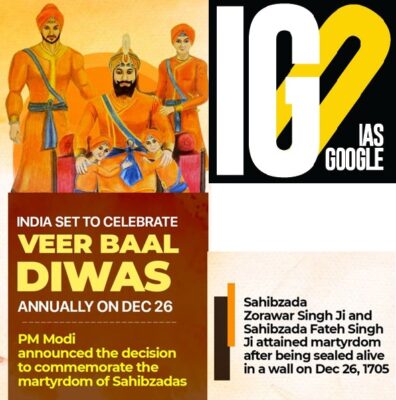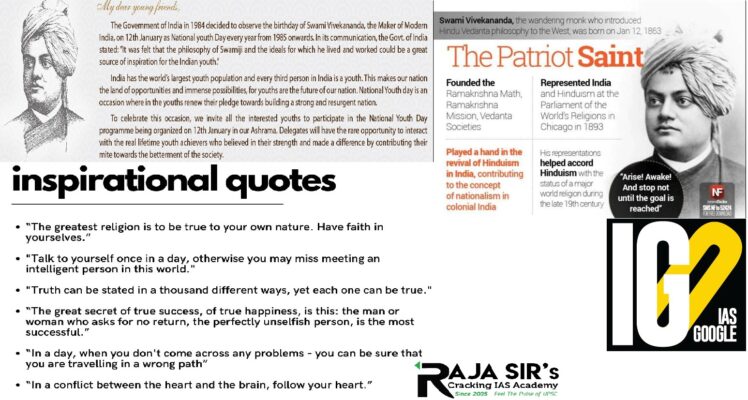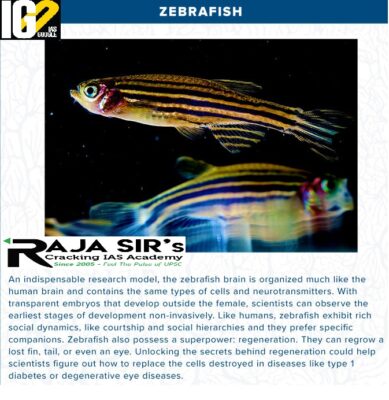- Home
- Prelims
- Mains
- Current Affairs
- Study Materials
- Test Series
Jan 13, 2022
ESMA IN HARYANA AGAINST STRIKE
Haryana government has invoked the Essential Services Maintenance Act (ESMA) prohibiting any form of strike by any category of employees for the next six months in the state.

 Guidelines:
Guidelines:


 Highlights:
Highlights:

 Early Life
Early Life
 World Hindi Day (Vishwa Hindi Diwas)
World Hindi Day (Vishwa Hindi Diwas)
 Synapses:
Synapses:

- This order is issued due to protests by government hospital doctors who went on mass casual leave and threatened to go on an indefinite strike.
- Three demands of the doctors are- Creating a specialist cadre for doctors, stopping the direct recruitment of senior medical officers (SMOs) and amending the post-graduate policy.
- The ESMA is a law made by the Parliament of India under List No. 33 in Concurrent List of 7th Schedule of Constitution of India.
- It was established to ensure the delivery of certain services, which if obstructed would affect the normal life of the people.
- The government can invoke this act to prohibit striking employees from refusing to work in certain essential services.
- Each state has a separate state Essential Services Maintenance Act with slight variations from the central law in its provisions.
- Any service with respect to which the Parliament has power to make laws or the government feels that its discontinuation would affect the maintenance of supplies and services necessary for sustaining life is considered an essential service.
- Services related to public conservancy, sanitation, water supply, hospitals or related with the defence of the country.
- Any establishment dealing with production, supply or distribution of petroleum, coal, power, steel and fertilizers also falls under this category.
- Banking, Communication and transport services and any government undertaking related to the purchase and distribution of food grains.
- Persons who commence the strike as well as those who instigate it are liable to disciplinary action, which may include dismissal.
- Any police officer is empowered to arrest the striking persons without a warrant.
- Persons participating in or instigating the strike are punishable with imprisonment, which may extend to one year or with fine or with both.
- The guidelines are a revision of the Harmonised Guidelines and Space Standards for Barrier-Free Built Environment for Persons with Disabilities and Elderly Persons.
 Guidelines:
Guidelines:
- Aim: Bringing the narrative of accessibility and universal design of every sector and element of built environment.
- Applicability: The guidelines are not just for persons with disabilities (PwD), but for those involved in planning projects, from the construction of government buildings to master-planning cities.
- Earlier, the guidelines were for creating a barrier-free environment, but new guidelines are focusing on universal accessibility.
- While making public buildings and transport fully accessible for wheelchair users is covered in the guidelines, other users who may experience temporary problems have also been considered.
- For instance, a parent pushing a child’s pram while carrying groceries and women wearing saris.
- It calls for accessibility symbols for person with disabilities, family-friendly facilities and transgender to be inclusively incorporated among the symbols for other user groups.

- It is one of the largest gas reserves found in the world.
- It is a natural gas field located near Darvaza, Turkmenistan.
- The Darvaza gas crater is also known as the ‘Gateway to Hell’.
- The site was identified by Soviet engineers in 1971.
- It was originally a substantial oil field site.
- While extracting the gas, the ground beneath the drilling rig collapsed into a wide crater.
- The gas has continued to burn for more than 50 years and is expected to keep on burning.
- The man-made crater negatively affects both the environment and the health of the people living nearby.
- It is affecting valuable natural resources which can be used for the well-being of the people.
- The current rankings are for first quarter of 2022.
- Most powerful Passports: Japan and Singapore
- Least Powerful: Afghanistan
- India’s rank: 83rd
- India shared the position with Sao Tome and Principe in Central Africa.
- India’s rank in 2021: 90th
- India now has visa-free access to 60 destinations worldwide with Oman and Armenia being the latest additions.
- It has added 35 more destinations since 2006.

- It is a global ranking of countries according to the travel freedom for their citizens.
- It started in 2006 as Henley & Partners Visa Restrictions Index (HVRI).
- It provides a ranking of the 199 passports of the world according to the number of countries their holders can travel visa-free.
- The index is based on the data derived from the International Air Transport Association (IATA).
- IATA is a trade association of the world's airlines founded in 1945.
- It supports airline activity and helps formulate industry policy and standards.
- Headquarters: Montreal, Canada.
- The survey of 1.61 lakh acres of defense land inside cantonments and 16.17 lakh acres outside cantonments was done.
 Highlights:
Highlights:
- Ministry of Defence owns large tracts of land measuring 99 lakh acres out of which 1.61 lakh acres is situated within the 62 notified Cantonments.
- Modern survey technologies like Electronic Total Station (ETS)and Differential Global Positioning System (DGPS) were used in the survey.
- ETS: It is an electronic instrument used in modern surveying and building construction that uses electronic transit theodolite in conjunction with an electronic distance meter.
- DGPS: It is an enhancement to the Global Positioning System (GPS) which provides improved location accuracy.
- To achieve better visualization of defense land in a hilly area 3D modelling techniques were used by utilizing Digital Elevation Model.
- As a part of the Survey, a project for a real-time change detection system based on the Time series Satellite imagery for detection of encroachments on defense land has been initiated.

- Sahibzada Zorawar Singhji and Sahibzada Fateh Singhji were sons of Guru Gobind Singh who attained martyrdom on this day.
- Both were cared for by their grandmother, Mata Gujari, until their martyrdom.
- Fateh Singh and Zorawar singh were bricked up alive within a wall.
- Both of them refused to accept the Islam.
- Wazir Khan sentenced them to death.
- Both Died:26 December 1705 Sirhind.
- He was born as Gobind Rai on 22 December 1666 in Patna Sahib.
- He was the tenth Sikh Guru, a spiritual master, warrior, poet and philosopher.
- He was formally installed as the leader of the Sikhs at the age of nine, a final human Sikh Guru.
- His four sons died during his lifetime– two in battle, two executed by the Mughal army.
- He founded the Sikh warrior community called Khalsa in 1699.
- Khalsa refers to both a community that considers Sikhism as its faith as well as a special group of initiated Sikhs.
- He also introduced the Five Ks, the five articles of faith that Khalsa Sikhs wear at all times.
- Five Ks- Kesh, Kara, Kangh, Kachera, Kripan.
- He is credited with the Dasam Granth whose hymns are a sacred part of Sikh prayers and Khalsa rituals.
- He is also credited as the one who finalized and enshrined the Guru Granth Sahib as Sikhism's primary scripture and eternal Guru.
- He also announced a code of discipline for Khalsa warriors.
- He introduced ideas that indirectly challenged the discriminatory taxes imposed by the Mughal authorities.
- He led fourteen wars but never took captives nor damaged anyone's place of worship.
- Died: 7 October 1708, Takhat Sachkhand Sri Hazur Abchal Nagar Sahib, Nanded.
 Early Life
Early Life
- Swami Vivekananda was a scholar, spiritual leader and a philosopher.
- He was born as Narendranath Datta on January 12, 1863, in Kolkata, West Bengal.
- He was always inclined towards
- He practised meditation from a very early age and also joined the Brahmo Samaj movement for a certain period.
- Society of Brahma is dedicated to eliminating child marriage and illiteracy.
- He had acquired a vast knowledge of different subjects, especially Western philosophy and history.
- He was the chief disciple of 19th century mystic and yogi Ramakrishna Paramhansa.
- He founded the Ramakrishna Math, a monastic order based on his guru’s teachings in Kolkata.
- He also started a worldwide spiritual movement known as the Ramakrishna Mission based on the ancient Hindu philosophy of Vedanta.
- After the death of his guru Ramakrishna Paramhamsa, he gave up on all of his worldly pleasures and became a monk.
- He became one of the most intellectual philosophers of the world, to have known and taught life through the art of love and knowledge of the soul.
- He was credited for introducing Indian philosophies of Vedanta and Yoga to the western world.
- His philosophies give a better perception of the world.
- He played a major role in the upliftment of the society by educating women and lower castes.
- He also highlighted the importance of unity among all the religions.
- He had a very strong belief that youth can transform the fate of India through their hard work, dedication and spiritual power.
- His theory of optimism was to replace the weak thoughts with the help of yoga and meditation.
- He is credited with contributing to a revival of modern Hinduism and inspiring nationalist consciousness during colonial rule.
- He is best known for his famous 1893 speech where he introduced Hinduism to the Western world in Chicago.
- Universal Brotherhood Day is observed on 11 September to commemorate his historic speech in Chicago.
- He wrote the books named ‘Raja Yoga’, ‘Jnana Yoga’, and ‘Karma Yoga’.
- Subhas Chandra Bose called Vivekananda “the maker of modern India”.
- Mahatma Gandhi credited Vivekananda’s with increasing his “love for his country a thousandfold”.
- In 1985, the Government of India declared Swami Vivekananda’s birthday, as National Youth Day in honour of the great philosopher and monk.
 World Hindi Day (Vishwa Hindi Diwas)
World Hindi Day (Vishwa Hindi Diwas)
- Vishwa Hindi Divas commemorates the anniversary of the first World Hindi Conference held in Nagpur on January 10, 1975.
- World Hindi Day is different from Hindi Divas which is celebrated on September 14 every year.
- September 14 also marks the birthday of Beohar Rajendra Sinha, who is also regarded as the main person behind making Hindi the official language of India.
- Hindi is an Indo-Aryan language spoken chiefly in the Northern part of India.
- Spoken Hindi has 4 varieties: High Hindi, Nagari Hindi, Literary Hindi, and standard Hindi.
- The word Hindi came from a Persian word ‘Hind’, which means the land of the Indus River.
- Hindi is the third most spoken language in the world after English and Mandarin (Chinese).
- Hindi became the official language of India in 1965.
 Synapses:
Synapses:
- Synapses are microscopic gaps that separate the terminal of one neuron from receptors of another neuron in brain.
- There are two types of synapses: Chemical and Electrical.
- In chemical synapses, there is a space of about 20 nanometers between two neurons.
- In electrical synapses, the two neurons have a physical connection and the conversion of electrical to chemical need not occur and they communicate directly.
- Electrical synapses are like a physical wire. Communication is faster but they are also fewer in number.
- Researchers used Zebra fish for their study.
- Research shows that electrical synapses are formed before chemical synapses.
- They are like a blueprint in which neurons make a handshake. This results in the making of chemical synapses.
- Research on organisms such as leeches showed that removing electrical synapses means that chemical synapses do not form. However, the mechanism of how it happens in higher organisms such as vertebrates was not known.
- The group observed that knocking out a particular protein known as the gap junction delta 2b (gjd2b)in the cerebellum (structure located at the back of the brain) of zebrafish affected levels of the enzyme CaMKII.
- Levels of CaMKII were seen to increase in the Purkinje neurons in the cerebellum.
- These neurons and the cerebellum itself control coordination of movements in the organism.
- The zebrafish is a freshwater fish belonging to the minnow family (Cyprinidae).
- It is a popular aquarium fish, frequently sold under the trade name zebra danio.
- The zebrafish is an important and widely used vertebrate model organism in scientific research, for example in drug development, in particular pre-clinical development.
- Its embryos are nearly transparent which allows researchers to easily examine the development of internal structures.
- Every blood vessel in a living zebrafish embryo can be seen using just a low-power microscope.
- The zebrafish is native to fresh water habitats in South Asia where it is found in India, Pakistan, Bangladesh, Nepal and Bhutan.
- It typically inhabits moderately flowing to stagnant clear water of quite shallow depth in streams, canals, ditches, oxbow lakes, ponds and rice paddies.
- As a vertebrate, the zebrafish has the same major organs and tissues as humans.
- Their muscle, blood, kidney and eyes share many features with human systems.









 Latest News
Latest News
 General Studies
General Studies